
Piero Manzoni di Chiosca e Poggiolo, better known as Piero Manzoni was an Italian artist best known for his ironic approach to avant-garde art. Often compared to the work of Yves Klein, his own work anticipated, and directly influenced, the work of a generation of younger Italian artists brought together by the critic Germano Celant in the first Arte Povera exhibition held in Genoa, 1967. Manzoni is most famous for a series of artworks that call into question the nature of the art object, directly prefiguring Conceptual Art. His work eschews normal artist's materials, instead using everything from rabbit fur to human excrement in order to "tap mythological sources and to realize authentic and universal values".

Arte Povera was an art movement that took place between the end of the 1960s and the beginning of the 1970s in major cities throughout Italy and above all in Turin. Other cities where the movement was also important are Milan, Rome, Genoa, Venice, Naples and Bologna. The term was coined by Italian art critic Germano Celant in 1967 and introduced in Italy during the period of upheaval at the end of the 1960s, when artists were taking a radical stance. Artists began attacking the values of established institutions of government, industry, and culture.

Enrico Baj was an Italian artist and writer on art. Many of his works show an obsession with nuclear war. He created prints, and sculptures but especially collage. He was close to the surrealist and dada movements, and was later associated with CoBrA. As an author, he has been described as a leading promoter of the avant-garde. He worked with Umberto Eco among other collaborators. He had a long interest in the pseudo-philosophy 'pataphysics.

Artist's Shit is a 1961 anti-artwork by the Italian artist Piero Manzoni. The work consists of 90 tin cans, each reportedly filled with 30 grams (1.1 oz) of faeces, and measuring 4.8 by 6.5 centimetres, with a label in Italian, English, French, and German stating:
Artist's Shit
Contents 30 gr net
Freshly preserved
Produced and tinned
in May 1961
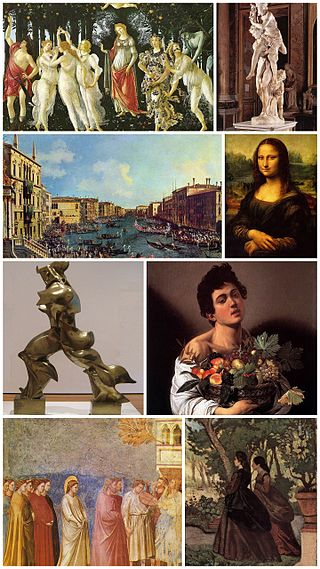
Italian Contemporary art refers to painting and sculpture in Italy from the early 20th century onwards.
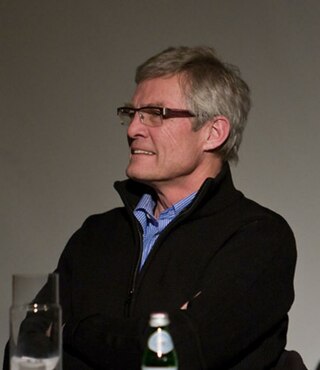
John O'Brian is an art historian, writer, and curator. He is best known for his books on modern art, including Clement Greenberg: The Collected Essays and Criticism, one of TheNew York Times "Notable Books of the Year" in 1986, and for his exhibitions on nuclear photography such as Camera Atomica, organized for the Art Gallery of Ontario in 2015. Camera Atomica was the first comprehensive exhibition on postwar nuclear photography. From 1987 to 2017 he taught at the University of British Columbia, Vancouver, where he held the Brenda & David McLean Chair in Canadian Studies (2008-11) and was an associate of the Peter Wall Institute for Advanced Studies. O'Brian has been a critic of neoconservative policies since the start of the Culture Wars in the 1980s. He is a recipient of the Thakore Award in Human Rights and Peace Studies from Simon Fraser University.
Voltolino Fontani was an Italian painter.
Eaismo was a 20th-century avant-garde movement born in Italy in 1948, founded by the painter, Voltolino Fontani, who was the main representative of it, with the poet Marcello Landi, the literary critic Guido Favati and the painters Angelo Sirio Pellegrini and Aldo Neri.
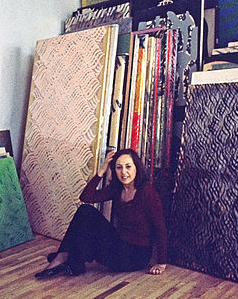
Carla Accardi was an Italian abstract painter associated with the Arte Informel and Arte Povera movements, and a founding member of the Italian art groups Forma (1947) and Continuità (1961).

Sante Monachesi (1910–1991), was an Italian painter belonging to the modern movement of the Scuola romana and founder in 1932 of the Movimento Futurista nelle Marche .

Remo Bianco, birth name Remo Bianchi, was an Italian painter and sculptor.
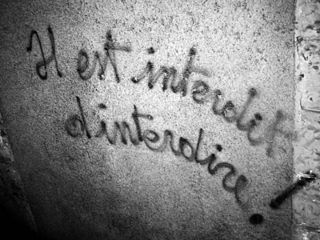
The International Movement for an Imaginist Bauhaus was a small European avant-garde artistic tendency that arose out of the breakup of COBRA, and was initiated by contact between former COBRA members Asger Jorn and Enrico Baj and Sergio Dangelo of the Nuclear Art Movement.
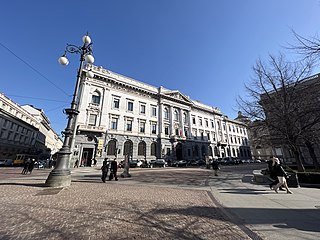
The Gallerie d'Italia - Milano is a modern and contemporary museum in Milan, Italy. Located in Piazza della Scala in the Palazzo Brentani and the Palazzo Anguissola, it hosts 195 artworks from the collections of Fondazione Cariplo with a strong representation of nineteenth century Lombard painters and sculptors, including Antonio Canova and Umberto Boccioni. A new section was opened in the Palazzo della Banca Commerciale Italiana on October 25, 2012 with 189 art works from the twentieth century.
Arte Informale is a term coined in 1950 by the French critic Michel Tapié to refer to the art movement that began during the mid-1940s in post-World War II Europe. This movement also paralleled the Abstract Expressionism movement that was taking place at the same time in the United States, and had ties to the Arte Povera movement. Sometimes referred to as Tachism, Art Autre or Lyrical Abstraction, it was a type of abstraction in which form became less important than that of the expressive impulses of the artist, and was opposed to the rationalism of traditional abstraction. The qualities of informal art explore the possibilities of gesture, materials, and signage as the basis of communication. Oftentimes art characterized as informal is executed spontaneously and the approach to painting and sculpture are generally gestural, performative, expressionistic and experimental. Certain artists such as Lucio Fontana, Alberto Burri and Emilio Vedova were crucial figures of this movement.
Ettore Sordini was an Italian artist, a disciple of Lucio Fontana, a friend and collaborator of Piero Manzoni and a member of the Gruppo del Cenobio.
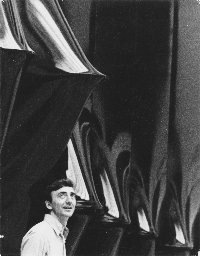
Agostino Bonalumi was an Italian painter, draughtsman and sculptor.
Marcello Landi (1916–1993) was an Italian painter and poet.
Ferruccio Mataresi was born in Livorno and began his artistic career in 1940 with the teaching of the painter Eugenio Carraresi it continues the study in the Accademia delle Belle Arti of Florence and it frequents the study of Pietro Annigoni.
Augusto Orazio Vittorio Garau was an Italian artist, theorist of color, and professor. Garau took part in the Concrete art Movement (MAC).

Sergio Dangelo was an Italian surrealistic painter and illustrator. He was the founder of the Arte nucleare movement, part of the nuclear art tendency, and was a co-founder of the International Movement for an Imaginist Bauhaus.














